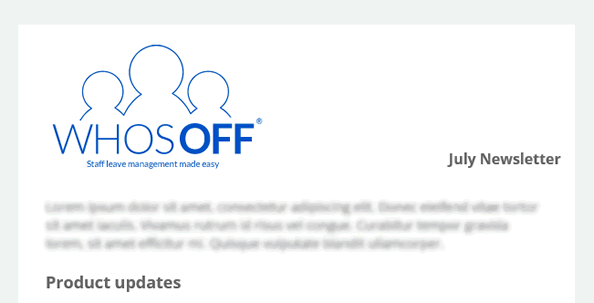Sick leave is big business for company bosses; in the UK alone, staff illness costs employers £77 billion in lost productivity each year. While most of these absences can’t helped, there are sometimes less than honest reasons that employees want to take a day off.
To understand how external forces can impact staff sickness rates, WhosOff has delved into our data centre and analysed absence patterns across 3,000+ companies using our leave management software. It’s revealed some interesting trends
Game on...or game over?
While major sporting tournaments bring nations together, they can have a divisive impact on workplace camaraderie. During the 2018 World Cup, for example, staff absences increased by 55% on the day of England’s tense penalty shoot-out with Columbia, compared to the same date the previous year. There was also a 54% rise in people calling in sick to work the following day.
The impact was even more marked when the result wasn’t positive; year-on-year absence rates rose by 45% on the day of England’s World Cup semi-final match with Croatia, but this increased to 62% the day after their defeat. It seems sporting fans really do need time to nurse their wounds!
Feeling the heat?
It’s not just sport that impacts work attendance rates, as it seems the weather can wreak havoc with sickness stats as well.
2018 was a hot year, with temperatures peaking in late July. Across this particularly scorching month, staff absences increased by 6.4% compared to June figures. While some employees will have undoubtedly been affected by sunburn and heatstroke, it does beg the question whether cold beers and barbecues were just too tempting for others.
Too much festive spirit?
As we discussed in our previous data trends blog post, winter is the worst time of year for staff illness. However, there’s a definite correlation between the demands of the festive season and employee absence rates.
For instance, the top five days for sick last year were all Mondays in late November or December – perhaps indicative of a little too much festive spirit the previous weekend.
In fact, the worst day of the entire year for staff absence, dubbed National Sickie Day by some firms, was Monday 10th December 2018. Sickness stats were 28% higher than average on this date. As an interesting contrast, April 1st had the second lowest sick leave levels in 2018 after January 1st. Maybe workers were worried that their boss wouldn’t believe them?!
Seasonal shindigs might not be the only reason that employees are missing work at the festive time of year. WhosOff data shows that holiday bookings are 25% higher on Black Friday compared to other dates in November, as bargain hunters focus on their Christmas shopping...but more than 1,000 less organised people called in sick that day last year.
Get ahead of employee absence trends
This blog post might be a light-hearted look at potential sickies, but the truth of the matter is that most employees work hard, only taking to their bed through genuine illness. That being said, companies may well find some interesting absence trends that are unique to their business, if they have relevant data available.
Leave management software not only improves the process for requesting and approving holidays; it enables businesses to track unplanned leave like illness, to see exactly how attendance is impacting productivity. It’s also a really useful tool for HR to manage absence among any staff you feel might be bending the rules or testing the limits of your policy.
By identifying when your staff are most vulnerable to illness, companies can take proactive measures to reduce its impact – whether that means enforcing a ‘zero tolerance’ rule to stop colds and viruses spreading round the office, giving staff the option to come in late one morning to recharge their batteries, or limiting the number of annual leave days that can be taken during peak sickness months, to prevent attendance problems being exacerbated.
Try WhosOff for free to understand how illness is affecting your business, and how you can reduce the number of unnecessary sick days.
Photo by Pixabay from Pexels.com

